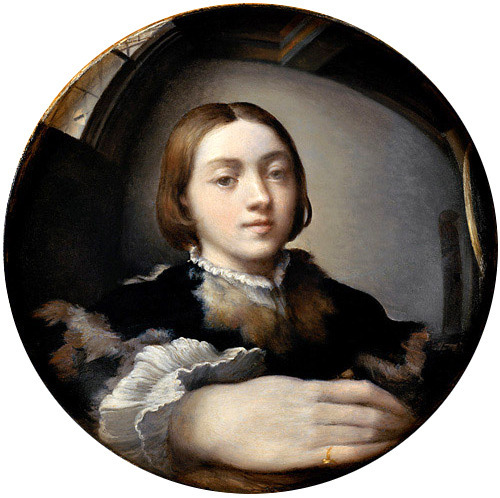To be fair, there was a whole school of poets pushing into postmodern aesthetics in the late 1960s and early 1970s (continuing even today), known as the Language poets, who sought to decenter the "poem" from the poet and make the reader responsible for the poem's meaning. Among the most notable poets in this very diverse group are Rae Armantrout, Charles Bernstein, Clark Coolidge, Carla Harryman, Lyn Hejinian, Fanny Howe, Susan Howe, Jackson Mac Low (1922—2004), Nathaniel Mackey, Michael Palmer, Leslie Scalapino (1944—2010), Ron Silliman, and Barrett Watten.
About Ashbery (from Wikipedia)
"No figure looms so large in American poetry over the past 50 years as John Ashbery," Langdon Hammer, chairman of the English Department at Yale University, wrote in 2008. "[N]o American poet has had a larger, more diverse vocabulary, not Whitman, not Pound." Stephen Burt, a poet and Harvard professor of English, has compared Ashbery to T. S. Eliot, the "last figure whom half the English-language poets alive thought a great model, and the other half thought incomprehensible".And this overview of his work:
Ashbery's works are characterized by a free-flowing, often disjunctive syntax; extensive linguistic play, often infused with considerable humor; and a prosaic, sometimes disarmingly flat or parodic tone. The play of the human mind is the subject of a great many of his poems. Ashbery once said that his goal was "to produce a poem that the critic cannot even talk about." Formally, the earliest poems show the influence of conventional poetic practice, yet by The Tennis Court Oath a much more revolutionary engagement with form appears. Ashbery returned to something approaching a reconciliation between tradition and innovation with many of the poems in The Double Dream of Spring, though his Three Poems are written in long blocks of prose. Although he has never again approached the radical experimentation of The Tennis Court Oath poems or "The Skaters" and "Into the Dusk-Charged Air" from his collection Rivers and Mountains, syntactic and semantic experimentation, linguistic expressiveness, deft, often abrupt shifts of register, and insistent wit remain consistent elements of his work.
In the Open Journal of Philosophy, Roland Benedikter and Judith Hilber look at Ashbery's poem as a mirror of the postmodern mind from the viewpoint of an interdisciplinary history of ideas.
Citation:
Benedikter, R. & Hilber, J. (2012, Feb). The Post-Modern Mind. A Reconsideration of John Ashbery’s “Self-Portrait in a Convex Mirror” (1975) from the Viewpoint of an Interdisciplinary History of Ideas. Open Journal of Philosophy; Vol.2, No.1, 64-73. DOI:10.4236/ojpp.2012.21010Roland Benedikter, Judith Hilber
Figure: Parmigianino (Girolamo Francesco Maria Mazzola): Self-Portrait in a Convex Mirror, c. 1524; Oil on wood, diameter 24.4 cm; Kunsthistorisches Museum Vienna.
Abstract:
This paper gives a short description of basic features of the dominating mindset in the Western world between the 1970s and today, often called “post-modern”, through a re-reading of John Ashbery’s poem “Self-Portrait in a Convex Mirror” (1975). In doing so, it applies the viewpoint of an interdisciplinary history of ideas. Since collective mindsets have become the most important contextual political factors, the implications are multiple.
Introduction: Literature and Philosophy
Anticipating the Post-Modern Mind
All media are extensions
of some human faculty—
psychic or physical
~ Marshall McLuhan
Four years before the publication of Jean-Francois Lyotard’s seminal treatise “The Postmodern Condition” (1979)1—which provided the name to the “post-modern” movement in literature, philosophy and the arts, and in this way branded a mindset that was to dominate the cultural paradigm of the West throughout the following decades—American poet John Ashbery anticipated most of the decisive traits of this worldview and attitude in an epochal poem, “Self-Portrait in a Convex Mirror” (1975). This prescient vision confirmed the close relation between the literature, philosophy and social psychology of his time. In fact, Ashbery’s poem is not only a meditation on art, but also an early and most lively description of the “post-modern” mindset, destined to remain valid for decades, up to the present day. In it, painting and writing are closely examined, while the gestalt of a passage in the history of the Western mind is taking shape.
As appropriate for—and consistent with—the structural doublefacetedness of the post-modern mind, the author plays a double role in his poetical endeavor. As the writer of the poem he is an artist; whereas in discussing Parmigianino’s painting in the poem he becomes an art critic. The unusually long poem (over 500 lines long2 ) begins with a very neutral language, a catalogue of descriptive facts about Parmigianino taken from Giorgio Vasari. Consecutively Ashbery’s examination drives both the author and the reader backwards on a journey to Parmigianino’s self-portrait, into which one enters as if it were a self-projection of the author, to which the reader must witness. In fact, Parmigianino’s painted ego manifests itself as Ashbery’s psychic extension. Drawn closer and closer, the extension is overcome and Ashbery’s identification takes place, until he once again frees himself and retreats back to his original position. The dual aspect, extended to numerous subjects, becomes important for an appreciation of the entirety of poem. The poetic flow feeds upon such dualities, and creates dichotomies, only to unify them later.
In this essay we attempt to identify and investigate some of these dualisms and ambivalences in the poem, with special regard to Ashbery’s position in the post-modern movement. In particular, we seek to elucidate the interdependence of contrasting and divergent factors as a principle of complementarity that Ashbery—representative of the post-modern worldview—elevates to the level of a philosophy of life. In addition, a general view of self-portraiture, using the example of Parmigianino, will be given.You can download the PDF to read the whole article.

No comments:
Post a Comment